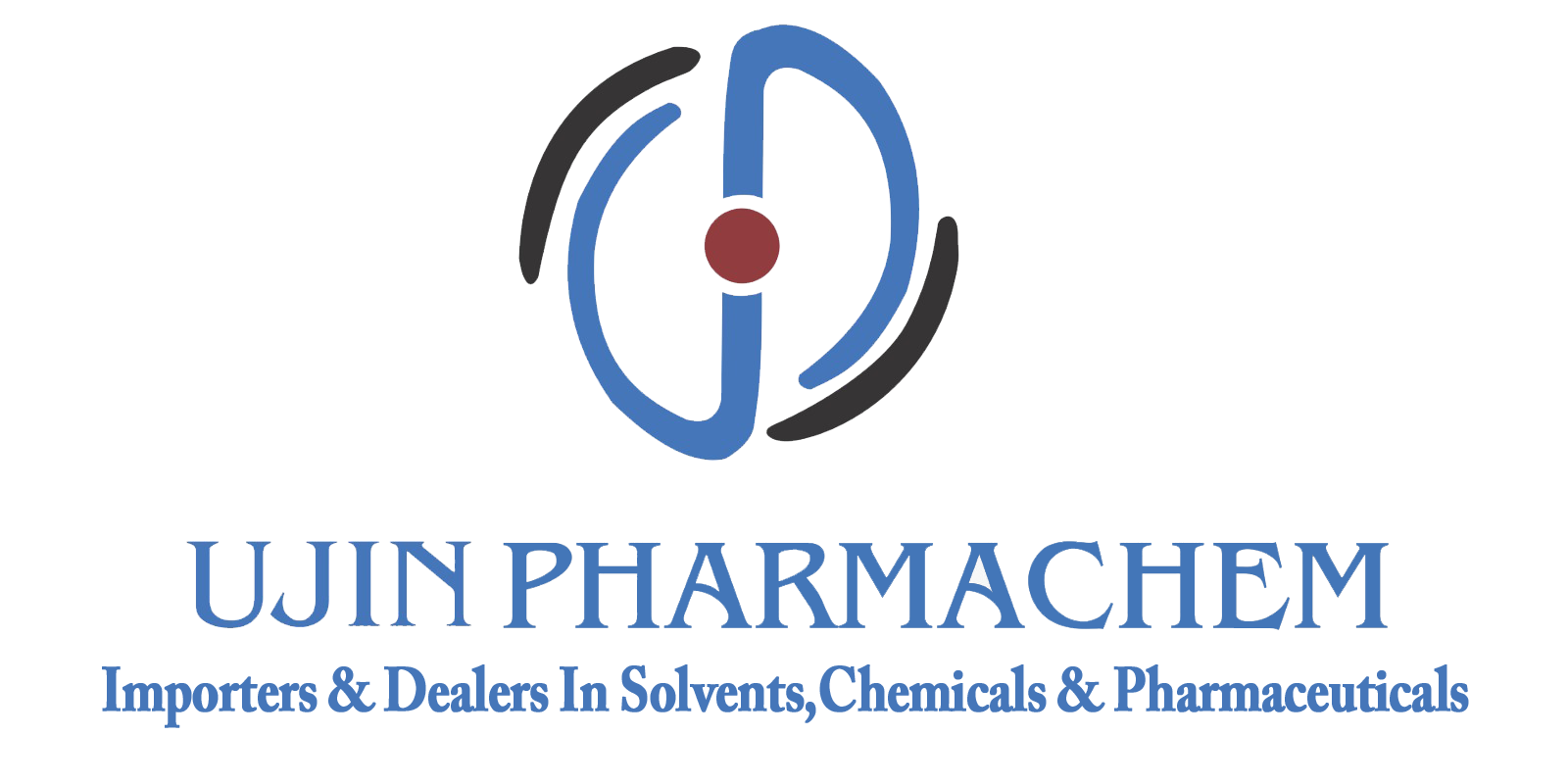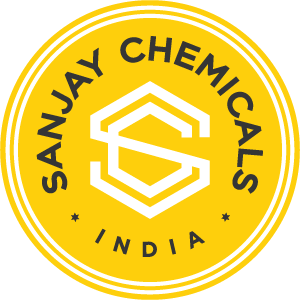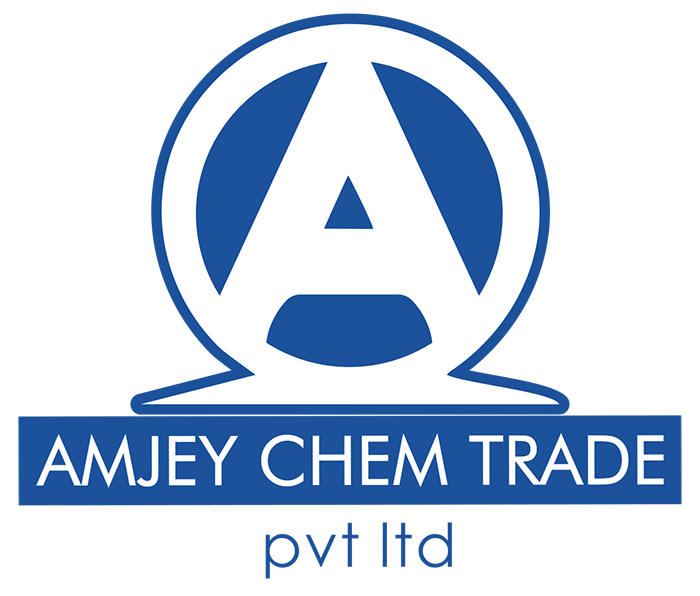| Chinese name |
Isopropyl alcohol |
| English Name |
Isopropanol |
| Alias |
Isopropyl alcohol
2-Propanol
dimethyl methanol
medicinal isopropyl alcohol
high purity isopropyl alcohol
isopropyl alcohol standard solution
isopropyl alcohol (anhydrous)
2-Propanol (Isopropyl Alcohol)
2-propanol, dimethyl methanol
2-Propanol (anhydrous isopropanol)
isopropyl alcohol [for spectrophotometric determination]
isopropyl alcohol, 67-63-0, Aladdin reagent |
| English alias |
IPA
2-Propanol
Isopropanol
propan-1-ol
Isopropylalcohol
2-PROPANOL (IPA)
Isopropyl Alcohol
iso propyl alcohol
isopropanol anhydrous
Propan-2-ol-SPECIFIED
isopropanol molecular biology
2-PROPANOL ULTRA RESI-ANALYZED |
| CAS |
67-63-0 |
| EINECS |
200-661-7 |
| Chemical formula |
C3H8O |
| molecular weight |
60.1 |
| InChI |
InChI=1/C3H8O/c1-2-3-4/h4H,2-3H2,1H3 |
| Density |
0.785g/mLat 25°C(lit.) |
| melting point |
-89.5°C |
| boiling point |
82°C(lit.) |
| Flash Point |
53°F |
| water solubility |
miscible |
| Vapor pressure |
33mm Hg ( 20 °C) |
| steam density |
2.1 (vs air) |
| JECFA Number |
277 |
| solubility |
Water: Soluble (complete) |
| refractive index |
n20/D 1.377(lit.) |
| acidity coefficient |
17.1(at 25℃) |
| Storage conditions |
Store at +5°C to +30°C. |
| Appearance |
low melting point solid |
| Specific Gravity |
approximate 0.785(20/20℃)(Ph.Eur.) |
| Color |
colorless |
| Smell |
Like ethyl alcohol; sharp, somewhat unpleasant; characteristic mild alcoholic; nonresidual. |
| Maximum wavelength (λmax) |
['λ: 260 nm Amax: 0.02',
, 'λ: 280 nm Amax: 0.01'] |
| Merck |
14,5208 |
| BRN |
635639 |
| explosion limit value |
2-13.4%(V) |
| Exposure Limits |
TLV-TWA 980 mg/m3 (400 ppm); STEL 1225 mg/m3 (500 ppm) (ACGIH); IDLH 12,000 ppm (NIOSH). |
| physicochemical properties |
colorless transparent flammable liquid, like the smell of ethanol. With water, ethanol, ether, chloroform miscible. |
| Dangerous Goods Signs |
Xi-Irritant
F-Flammable Xn-Hazardous |
| Risk Terms |
R11-Highly flammable.
, R36-Irritating to eyes.
-R67-Vapor may cause drowsiness and dizziness.
-R40-Few reported carcinogenic consequences.
, R10-Flammable.
, R36/38-Irritating to eyes and skin. |
| Security terminology |
S7-Keep container sealed.
, S16-Keep away from ignition sources.
, S24/25-Avoid skin and eye contact. S26-
After contact with eyes, rinse immediately with plenty of water and seek medical advice.
, S36/37-Wear appropriate protective clothing and gloves. |
| Dangerous Goods Transport Number |
UN 1219 3/PG 2 |
| WGK Germany |
1 |
| RTECS |
NT8050000 |
| FLUKA BRAND F CODES |
3-10 |
| TSCA |
Yes |
| Customs number |
2905 12 00 |
| Hazard Class |
3 |
| Packing Group |
II |
| Upstream raw materials |
propylene phosphoric acid |
| Downstream Products |
isopropyl acetate isopropyl palmitate |
Isopropyl Alcohol -Properties
Colorless transparent liquid. Slight smell of ethanol. It can be miscible with water, ethanol, ether and chloroform. Its vapor and air form an explosive mixture, which can cause combustion and explosion when exposed to open flame and high heat. Can react strongly with oxidants. In case of high heat, the internal pressure of the container increases, and there is a risk of cracking and explosion.
Isopropyl alcohol -preparation
, the raw material gas containing more than 50% propylene is absorbed by 75~6 ~ 85% concentrated sulfuric acid at 50 ℃ and low pressure to produce isopropyl hydrogen sulfate. Isopropyl hydrogen sulfate is then hydrolyzed to isopropanol. After crude distillation, the distillation tower is used to concentrate to 95%, then benzene is used to extract, water is separated and then distilled, and a finished product containing more than 99% isopropanol can be obtained. Alternatively, propylene and water were pressurized to 1.96 MPa respectively. And preheated to 200 degrees C, mixed and added to the reactor, hydration reaction. After neutralization and heat exchange, the reaction gas is sent to a high-pressure cooler and a high-pressure separator. Isopropanol in the gas phase is recovered by spraying with deionized water in a recovery tower. 85% ~ 87% isopropanol aqueous solution is distilled by a crude distillation tower, concentrated to 95% by a distillation tower, and then extracted with benzene to obtain more than 99% isopropanol.
Isopropyl alcohol -standard
This product is 2-propanol.
Isopropyl alcohol -Properties
- This product is colorless clear liquid.
- This product and water, methanol, ethanol or ether can be arbitrarily miscible.
relative density
The relative density (general 0601 Wechsler gravity scale method) is 0. 785~0.788.
Refractive rate
The refractive index (general 0622) is 1. 376~1. 379.
Last update: 2022-01-01 11:22:18
Isopropyl alcohol -use
determination of barium, calcium, copper, magnesium, nickel, potassium, sodium, strontium, nitrite, cobalt and other reagents. Chromatographic analysis standards. As chemical raw materials, it can produce acetone, hydrogen peroxide, methyl isobutyl ketone, diisobutyl ketone, isopropyl amine, isopropyl ether, isopropyl ether, isopropyl chloride, and fatty acid isopropyl ester and chlorinated fatty acid isopropyl ester. In fine chemicals, it can be used to produce isopropyl nitrate, isopropyl xanthate, triisopropyl phosphite, aluminum triisopropoxide, pharmaceuticals and pesticides. As a solvent, it can be used in the production of paints, inks, extractants, aerosol agents, etc. It can also be used as an antifreeze, detergent, additive for blending gasoline, dispersant for pigment production, fixing agent for printing and dyeing industry, antifogging agent for glass and transparent plastic, etc.
Isopropyl Alcohol -Identification
- Take lm l of this product, add iodine test solution 2m l and sodium hydroxide test solution 2ml, shake, produce yellow precipitate, and produce iodoform special odor.
- Take this product 5ml, add potassium dichromate test solution 20ml, and then carefully add sulfuric acid 5ml, in the water bath slowly heating, the gas can make immersed in salicylaldehyde-ethanol solution (1:10) and 30% sodium hydroxide solution filter paper reddish brown.
- The infrared absorption spectrum of this product should be consistent with that of the control (general 0402).
Isopropyl alcohol -safety
Rats oral LD50:5.8 g/kg. Headache, drowsiness and eye, nose and throat irritation may occur when exposed to high concentrations of steam. The staff shall be well protected and the workplace shall be well ventilated. Store in a cool, ventilated warehouse. Keep away from fire and heat source. Prevent direct sunlight. Keep container sealed. Should be stored separately from the oxidizer.
Isopropyl Alcohol -Check
Acidity
Take 50.0ml of this product, add 100ml of water, add 2 drops of phenolphthalein indicator liquid, drop sodium hydroxide titrant (O .lm o l/L) until the pink is 30 seconds without fading, and consume sodium hydroxide titrant (0. lm o l/L) shall not exceed 1. 4ml.
Solution Clarity and Color
Take this product 1.0ml, add water 20ml, mix well, let stand for 5 minutes, according to law inspection (general rule 0901 and general rule 0902) , the solution should be clear and colorless.
Absorbance
Take this product, according to ultraviolet-visible spectrophotometry (general 0401) determination, in 230nm, 250nm, 270nm, 290nm and 3l0nm wavelength absorbance shall not be greater than 0.30, 0.10, 0.03, 0.0 2 and 0.01.
water insoluble matter
Take this product 2 .0 m l, add water 8 m l, shake, place 5 minutes, the solution should be clear.
non-volatile matter
Take 50.0ml of this product, place it in a 105°C constant weight evaporating dish, evaporate it on a water bath, and then dry it at 105°C for 1 hour. The remaining residue shall not exceed 1. 0mg [0.002% (g /m l) ].
easy oxide
Take 10.0ml of this product, place it in a colorimetric tube, adjust the temperature to 15°C, add potassium permanganate titration solution (0.02mQl/L)0.50ml, plug tightly, shake well, and stand at 156C for 15 minutes. The pink of the solution shall not completely disappear.
easy carbonization
Take sulfuric acid 5ml, placed in dry colorimetric Zan, cooled to 1 0V, shake while dropping 5. 0ml of this product (keep the solution temperature not higher than 20°C ) , the color of the solution and yellow No. 1 standard colorimetric solution (general rules 0901) comparison, shall not be deeper.
carbonyl compound
Take 0.50ml of this product, place it in a plug colorimetric tube, add 2,4-dinitrophenylhydrazine solution (take 2,'dinitrophenylhydrazine 50mg, add 2ml of hydrochloric acid, dilute to 50ml with carbonyl-free methanol *, shake well) lm l, plug tightly, shake well, let stand for 30 minutes, add 8ml of pyridine, 2m l of water and potassium hydroxide-methanol solution (take 15ml of 33% potassium hydroxide solution, add 50ml)2ml of carbonyl-free methanol, shake well, stand for 30 minutes, dilute to 25ml with carbonyl-free methanol, shake well, and the resulting dark red and carbonyl compound (CO) impurity standard solution®0. 50ml shall not be deeper after treatment according to the same method.
Moisture
Take this product, according to the moisture determination method (general 0832 the first method 1) determination, moisture content shall not exceed 0 .2%.
Benzene and related substances
According to gas chromatography (general 0521).
- Chromatographic Conditions and System Suitability Test A capillary column with 6% cyanopropylphenyl-94% dimethylsiloxane as stationary liquid (or similar polarity) is programmed to increase the temperature at an initial temperature of 4 0 1, maintained for minutes, and increased to 240°C at a rate of 10T per minute for 10 minutes. The inlet temperature is 280°C and the detector temperature is 28CTC. The resolution of the n-propanol peak from the 2-butanol peak in the control solution (a) should be not less than 10.
- Determination Method Take this product as the test solution U ) ; Accurately measure 2-butanol lm l, place in a 50ml volumetric flask, dilute to scale with this product, shake well, accurately measure 5ml, place in a 100ml volumetric flask, dilute to scale with this product, shake well, and use it as the test solution (B); Accurately measure 0.5ml of 2-butanol and ml of n-propanol each in a 50ml volumetric flask, dilute to scale with this product, shake well, accurately measure 5ml, place in a 50ml volumetric flask, dilute to scale with this product, shake well, as control solution u); Precision measure benzene 100 1, place in a 100ml volumetric flask, dilute to scale with this product, shake well, precision measure 0.2ml, place in a 100ml volumetric flask, dilute to scale with this product, shake well, as control solution (B). Precisely measure the control solutions (a) and (B) and the test solutions (a) and (B), respectively, inject them into the gas chromatograph, and record the chromatogram. If benzene is contained in the test solution (a), its peak area shall not be greater than 0.5 times (0.0 0 2%) of the peak area of benzene in the control solution (B); The sum of the peak areas of other impurities in the test solution (B) shall not be greater than 3 times (0.3%) of the peak area of 2-butanol in the control solution (a).
Isopropyl alcohol -categories
Pharmaceutical excipients, solvents.
Isopropyl Alcohol -Storage
Shading, airtight preservation.
Isopropyl Alcohol -Introduction
Isopropyl alcohol is a colorless and transparent liquid with a pungent odor at room temperature. It has a low boiling point and density, soluble in water, alcohols and ether solvents. Isopropanol is a polar solvent that can be used to dissolve many organics.
isopropyl alcohol has a variety of applications. It is an important intermediate in the synthesis of chemicals and can be used to synthesize esters, ethers and alcohols. Isopropanol is also a common choice for industrial use as a solvent and cleaning agent.
Isopropanol -Chemical Properties
Colorless transparent liquid, similar to ethanol and acetone mixture
to the smell of the substance, can be miscible with alcohol, ether, chloroform and water, can dissolve alkaloids, rubber, shellac, rosin, synthetic resin and other organic and some inorganic substances, and water to form an azeotrope, insoluble in salt solution. At room temperature, it can start to burn, and the mixture of steam and air can easily form an explosive mixture.
isopropanol is prone to peroxide production and sometimes requires identification prior to use. The method is: take 10% isopropanol, add 1ml of 0.5 potassium iodide solution, 1:5 dilute hydrochloric acid ML and several drops of starch solution, shake well for 1 minute, if blue or blue-black is peroxidation. It is similar to ethanol and propanol, but has the properties of a secondary alcohol.
Isopropanol -Preparation
Isopropyl alcohol is a colorless and transparent organic compound, its preparation method mainly has the following several kinds:
1. from isopropionaldehyde
reduction: isopropionaldehyde and reducing agent (such as hydrogen, metal sodium, etc.) reaction, at the appropriate temperature and pressure conditions, can be prepared by isopropanol.
2. from propylene preparation: propylene and water heating reaction, the hydrated propionaldehyde, and then through the dehydration reaction, can be prepared isopropanol.
3. from propyne gas preparation: propyne gas is subjected to catalytic hydrogenation reaction to obtain propylene, and then according to the above method to prepare isopropanol.
Isopropyl alcohol -Basic data
molecular structure data
molar refractive index: 17.44
molar volume (m3/mol):75.9
isotonic capacity (90.2K):165.6
surface tension (dynes/cm):22.6
polarizability (10-24cm3):6.91
calculated Chemical Data
hydrophobic parameter calculation reference value (XlogP):0.3
number of hydrogen bond donors: 1
number of hydrogen bond acceptors: 1
number of rotatable chemical bonds: 0
topological Molecular Polar Surface Area (TPSA):20.2
number of heavy atoms: 4
surface charge: 0
Complexity: 10.8
Isotope Atomic Number: 0
to Determine Atomic Stereo Center Number: 0 Uncertain Atomic Stereo Center Number: 0
to Determine Chemical Bond Stereo Generation Center Number: 0 Uncertain Chemical Bond Stereo Generation Center Number: 0
to
Covalent Bond Unit Number: 1
Isopropyl Alcohol -Hazards and Protection
isopropyl alcohol is an organic solvent, which has certain toxicity and harmfulness. The following are about the hazards of isopropyl alcohol and protective measures:
hazards:
1. Irritating effect on skin and eyes, may cause redness, burning pain and inflammation;
2. Excessive inhalation of isopropyl alcohol vapor may cause dizziness, nausea, vomiting, difficulty breathing, and nervous system damage;
3. Long-term exposure or high intake of isopropyl alcohol may cause damage to the liver, kidneys and central nervous system.
Protective measures:
1. When using isopropyl alcohol, wear protective gloves, safety goggles, protective clothing and other protective equipment to avoid contact with skin and eyes;
2. When using isopropyl alcohol in a closed environment, ensure good ventilation to avoid inhaling excessive vapor;
3. Avoid contact with fire sources, high temperature substances or oxidants, isopropyl alcohol is flammable;
4. When a leak occurs, the source of the leak should be stopped immediately, and the appropriate adsorbent should be used for adsorption and cleaning;
5. Properly store isopropyl alcohol and avoid mixing with other chemicals.
Isopropyl Alcohol-Supply and Demand
Isopropanol is an organic solvent, which is also widely used in chemical reactions and industrial production. According to market demand, the supply and demand of isopropanol has been in balance.
demand, isopropyl alcohol is mainly used in coatings, cleaning agents, glue and other industries. With the development of the global economy and the increase of industrial manufacturing, the demand for isopropyl alcohol in these fields is also increasing. Especially in the automotive industry, building materials and art protection, the demand for isopropyl alcohol has increased.
the
supply side, the production of isopropanol is mainly carried out by synthesis. At this stage, many countries and regions in the world have isopropanol production capacity, such as the United States, China, Germany and so on. Among them, China is one of the largest producers of isopropanol.
Isopropyl Alcohol -Introduction
1. nature:
isopropyl alcohol is colorless transparent liquid, with special alcohol smell. It is soluble in water and a variety of organic solvents, such as
ether, methanol and alcohols. 3. Isopropyl alcohol is flammable and can form an explosive mixture with oxygen.
Uses:
Isopropanol is widely used in industrial fields, especially as a solvent for coatings, inks, resins and dyes. 2. Isopropanol in the preparation of certain chemicals
act as a reducing agent or catalyst. 3. In the laboratory, isopropyl alcohol is also commonly used as a general organic solvent.
preparation method:
of isopropyl alcohol can be prepared by the following two methods:
of 1. from propylene deoxygenation preparation: propylene at high temperature catalytic hydrogenation, generate isopropyl alcohol.
, 2. from acetone reduction preparation: acetone and hydrogen in the presence of catalyst reaction, the formation of isopropanol.
Safety Information: 1. Isopropyl alcohol is irritating and should avoid direct contact with skin and eyes.
2. in the operation of isopropyl alcohol, should pay attention to avoid inhalation of its vapor, so as not to cause poisoning. 3. with flammability, should be away from open flame and high temperature area, storage should be sealed preservation.
4 in the treatment of isopropyl alcohol waste liquid, need to take appropriate protective measures to prevent environmental pollution.
![]() +086 1911-7288-062 [ CN ]
+086 1911-7288-062 [ CN ]




































































































